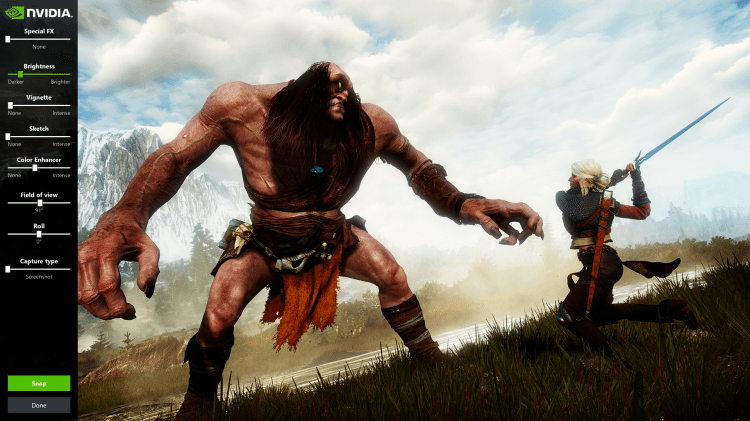The new GeForce GTX 1080 cards start reaching customers this weekend, but this powerful new video card is only a piece of Nvidia’s strategy to dominate gaming.
Nvidia sees itself as a platform company, according to GeForce head of marketing Matt Wuebbling. And he explained how that vision drives the company to focus on making useful, competent software that complements its chips. Nvidia, according to Wuebbling, isn’t a hardware vendor — instead, the company is developing an ecosystem that comprises software and services as well. For Nvidia, building the entirety of a platform is crucial to creating the best experience for its customers even if that means annoying PC gamers who prefer competing cards.
Last week, I wrote about how Nvidia’s hardware is great to own because of its software. To follow up on this, I caught up with Wuebbling to ask about the motivation behind the company’s efforts.
Making Nvidia the best way to game
“We’re all gamers at Nvidia. We’re trying to deliver products that make our end users happy,” said Wuebbling. “We also want to innovate and find the new thing to get our customers excited. That’s why we get up in the morning.”
The hot new thing at Nvidia right now is the GTX 1080 and 1070 cards that run on the new Pascal architecture featuring a 16nm processor. These are powerful cards, and they have many loyal players pulling out their credit cards. But Wuebbling explains that Nvidia knows that the things that are getting those people excited to spend their money will fade, and the company wants to replace that anticipation with contentment. That is what fuels Nvidia to build all of the peripheral features that come along with the hardware.
“At the end of the day, we’re making a platform,” said Wuebbling. “If game developers want to build on that platform, then users have a better experience.”
Nvidia’s notion that it is a “platform,” however, is a point of some contention among PC gamers running Radeon cards from competitor AMD. In the past, AMD has claimed that Nvidia’s GameWorks — which is a suite of tools that enable developers to include certain visual tricks in games on GeForce cards — can sabotage performance on Radeons. Nvidia reaches out to studios and will often help publishers market games for developers that use GameWorks — that’s why you see the Nvidia splash screen on so many PC games.
Nvidia has denied that GameWorks is meant to hurt the competition, but that hasn’t stopped Radeon owners from blaming Nvidia for the occasional game that doesn’t run as well on AMD chips. When I asked Wuebbling if he was trying to win over those fans, he said that he’s more interested in ensuring that people who choose Nvidia for the first time as well as the returning customers are happy.
“We’re looking at our current customers and what we can do to make them excited,” he said. “We want to find the innovative things coming down the pike that we can create for them. That’s how we approach it.”
Something more than a hardware company
Over the last several years, Nvidia has not announced a new chip without also talking about the features it’s bringing to GeForce Experience. And that’s because the company isn’t a collection of engineers banging away at silicon in a workshop — more than half of its engineers work primarily on software.
“For a company that people perceive as a hardware company — as a semiconductor company — that’s actually not really the case,” said Wuebbling. “When you think about what we’re delivering to people as a product, we’re not just hardware. We’re everything.”
A lot of those resources go toward ensuring the latest drivers are up to date as new big-name games launch. Updating those drivers, however, has grown more complicated as Nvidia has introduced new products like the Shield tablet and Android streaming box.
An update to a GeForce graphics card cannot cause a problem with features like streaming games to those other devices or using Shadowplay to livestream to Twitch. An example is streaming HDR (high-dynamic range) visuals, which enables a wider spectrum of colors and gamma settings, from a GeForce 1080 to the Shield. To implement that, the software and hardware teams across a number of Nvidia products have to work in concert with one another.
Beyond the update, the company is always looking to introduce new features. The latest is Ansel, which enables gamers to take high-quality screenshots with an easy-to-use tool. You can even capture a 3D, 360-degree, VR-ready scene using Ansel that other people can explore using a head-mounted display like Oculus Rift.
“We are always adding new features, so the product gets better over time,” said Wuebbling. “We’re consumers of the products ourselves. We use [them] here. That makes it obvious that it’s a good idea to keep improving the product.”
Wanting that better product is why Nvidia works as a platform company. It thinks that offering up GeForce Experience, GameWorks, and Shield will make the people who buy its chips happier. And as many people get ready to upgrade from an old GeForce card to the 1080 or 1070, it looks like that strategy is working.
VentureBeat's mission is to be a digital town square for technical decision-makers to gain knowledge about transformative enterprise technology and transact. Learn More

